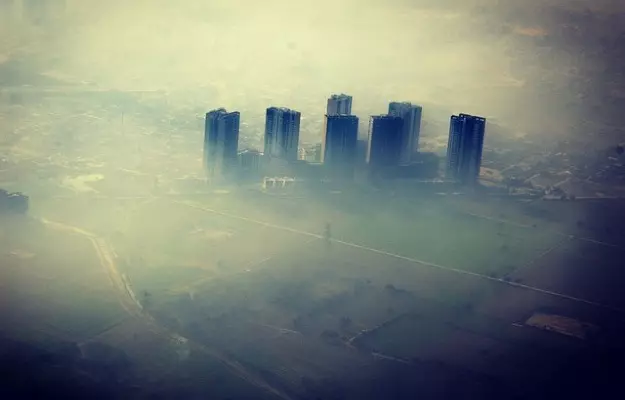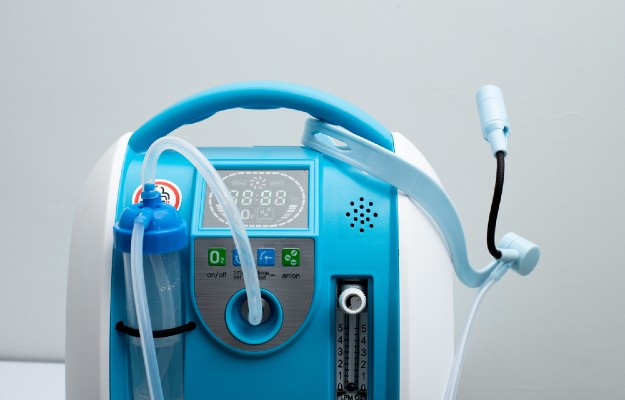According to the World Health Organization (WHO) statistics, outdoor air pollution accounts for as many as 4.2 million deaths every year, as a large majority of people living in urban areas are exposed to pollutant levels far higher than the WHO guidelines.
A recent study published in the preprint server medRxiv, conducted by scientists at the Imperial College of London, looked at COVID-19 deaths in the United Kingdom and correlated them with people who were exposed to nitrogen dioxide between the years 2014 and 2018. The UK is one of the countries that are badly hit by the COVID-19 pandemic, with more than 315,600 infections and 46,791 deaths as of 14 August 2020.
The study also looked at the effects of long-term exposure to PM2.5 particles along with nitrogen dioxide exposure in COVID-19 deaths and compiled data until 30 June this year. They studied as many as 38,573 deaths due to COVID-19, and after taking into account the various models used to quantify the effect of air pollution found that mortality rates rose by 0.5% in the case of exposure to nitrogen dioxide and 1.4% in the case of PM2.5 exposure.
But because of limited evidence in the case of both the pollutants (more so for PM2.5), the posterior probability of this hypothesis was adjusted to 0.93 for nitrogen dioxide or NO2 and 0.78 for PM2.5.
There is a likelihood of air pollution being a definite contributor to COVID-19 mortalities, at least in terms of exposure to nitrogen dioxide, while the effects of PM2.5 on COVID-19 mortalities is a little more ambiguous. Along with comorbidities such as heart disease, respiratory disorders, diabetes, hypertension and other diseases, long-term exposure to harmful gases through air pollution is a risk factor for severe COVID-19 according to these researchers.
COVID-19 is also known to have more severe effects on people with weakened immune systems along with comorbidities, and long-term exposure to air pollution has also been linked with weaker immune systems in general. This also explains a higher incidence of mortalities from COVID-19.
Read more: What it means to be immunocompromised
Delhi and Mumbai are counted among the world's most polluted cities, and long-term exposure to air pollution may have contributed to the high number of cases and deaths being observed in India in recent months as well.
Another study conducted by researchers at Harvard University earlier suggested that particle pollution—especially from PM2.5—has had adverse effects on many patients in the United States. The study, which has been available on the preprint servers since April 2020 found that even an increase of one microgram per cubic metre of PM2.5 particles resulted in an overall 8% increase in deaths due to COVID-19 in the country.
While the UK study had looked at long-term exposure to air pollution over a four-year period, the US study looked at data from more than 3,000 counties across the nation, and people who had lived in those areas over a 15- to 20-year period.
Read more: Why men are more at risk of severe COVID-19
According to the researchers, if Manhattan (one of the five boroughs in New York City) “had lowered its average particle pollution levels by even a single unit over the past 20 years, the borough would likely have seen 248 fewer deaths due to COVID-19 by April 2020”.
The study further recommended sustained restrictions on air pollution to safeguard against long-term illnesses and deaths even after the COVID-19 pandemic is over.
Another study looking at data from 355 municipalities in the Netherlands linked an increase of about 1 microgram per cubic metre of particulate matter with a rise of about 15 COVID-19 cases and three deaths.
The level of pollution in urban centres is far higher than the upper limit set by the WHO or other environmental bodies around the world. The WHO recommends that PM2.5 be kept below 10 micrograms per cubic metre per year, while the United States environmental body has a limit of 12 micrograms per cubic metre for PM2.5 particle pollution annually.
The United States has been the worst-hit country in the world from COVID-19, having seen 167,242 deaths (as of 14 August) with over 32,000 in New York alone. In India, which is now the third worst-hit country, the air quality of cities like New Delhi was as much as 23 times higher than the recommended WHO guidelines until November 2019, according to the Indian pollution control board.
Another study from Italy, which had reported 35,231 COVID-19 deaths as of 14 August, also showed a strong link between air pollution and COVID-19 fatalities. This led to questions over air quality in the Lombardy province of northern Italy—Lombardy had a high concentration of COVID-19 deaths, accounting for 13,000 out of Italy's total toll of a little over 26,000 in April 2020.




























